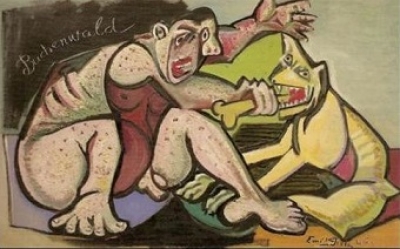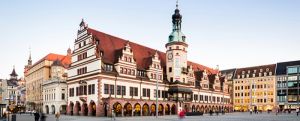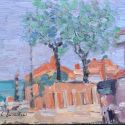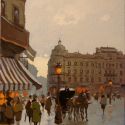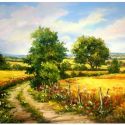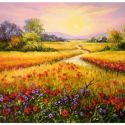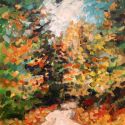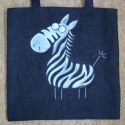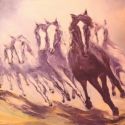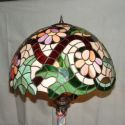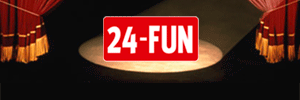In 1904 he won the Academy’s first prize. At the end of the year he set out on a lengthy journey to Germany, the Netherlands, Belgium, France, and Italy. He became absorbed in the Old Masters, especially Rembrandt. His own style passed from Post-Impressionism to a more expressive dominance of color. In 1907 he took part in the first exhibition of The Eight with a program painting, The Reader of Dostoyevsky, partly influenced by the Munch exhibition in Prague in 1905.
At the same time the picture is a very personal manifesto reflecting the Angst and scepticism of his generation. At the second exhibition of The Eight in 1908, he included paintings of the country around Dubrovnik. He moved to Prague, and in 1909, the year he visited Paris, he painted his expressive Red Ace, on the strength of which he was admitted to the Mánes Union of Artists.
In 1911 he edited several issues of Volné smery, in which he promoted Cubism and published reproductions of Picasso’s works that he had seen in Paris. Following negative reaction from his readers and from the leaders of the association he and various of his friends withdrew from Mánes and founded the Group of Plastic Artists in May of that year, oriented primarily towards Cubism. He did not himself produce genuinely Cubist work until the end of 1912, when he somewhat arbitrarily combined various phases of Cubism as he had observed them in the work of Picasso, Braque and others (e.g. Two Women, 1912). In 1913 he created his first Cubist sculptures.
At the at the beginning of the World War II he was arrested by the Gestapo together with painter Josef Čapek and others and was subsequently imprisoned in German concentration camps Dachau and Buchenwald. Returned home and began to teach at the Vysoká škola uměleckoprůmyslová v Praze (VŠUP—Academy of Arts, Architecture and Design in Prague). In 1945, he was the first artist to be given a post-war exhibition at Mánes. After the war, he exhibited mainly works from the cycle Boje a zápasy (Fights and Struggles). Later mainly produced landscapes.
